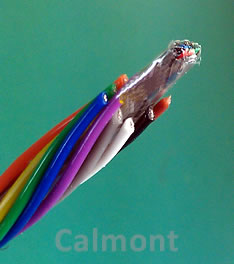Medical Cables: Preventing Redesign
Posted on

It is common to make changes to medical cables for medical devices from the original design. The reasons medical cables often are redesigned is to improve performance, add flexibility to a cable or eliminate cable design flaws. Often, minor design changes are made to the medical cable as feedback from the end user and/or field testing are received, other times the reason for redesign is due to poor performance of the cable, product failures and high return rate.
The reason for this is medical device companies on occasion, due to time and cost savings will use off-the-shelf wire and cable for their products which may meet initial expectations for proof of concept, prototypes and even clinical/field trials. Readily available off the shelf wire and cable is manufactured for a broad range of use, which this type of cable may be acceptable for some applications but not for others. Commodity wire is usually constructed using conductors with 7 or 19 strands, which is fine for static applications but will not perform well with repetitive flexing and movement. This is a common problem with handheld medical devices. As the stress of repeated flexing starts to break the fine strands of the conductor the wire will become less conductive, can damage the insulation or break altogether. The use of high strand count conductors and conductors made of alloys significantly improves the damage resistance of repeated bending and flexing. Using high strand count conductors can also improve a cable’s flexibility.
In these situations after a period of use, medical device manufacturers may experience product returns and device failures due to the wire and cable not withstanding day to day use. Custom cable manufacturers see requests for medical cable redesigns often, particularly in handheld devices and other applications where the wire or cable is manipulated, bent and flexed repeatedly. The reason for the wire and cable failure is usually due to the cable is not designed for the intended use of the application.
Medical Cables – Consult your Manufacturer
Every application has its unique needs and requirements. When considering the medical wire and cable for your device, it is best to discuss your application with a custom wire and cable manufacturer experienced in manufacturing medical cables. Custom cable manufacturers can guide you through the cable design process based on your particular product requirements and can suggest conductor stranding/material, insulation materials and construction. Having a cable designed for your specific product will improve your product’s performance and greatly reduce the chance of failures and returns once your medical device is in production.
If you would like to learn how you can improve your product’s performance and longevity by using the right cable, speak to one of our engineers today. Calmont’s engineers will answer your questions and assist you with your medical device design.
If you enjoyed this article, please take a moment to share it with your colleagues. Feel free to comment.
